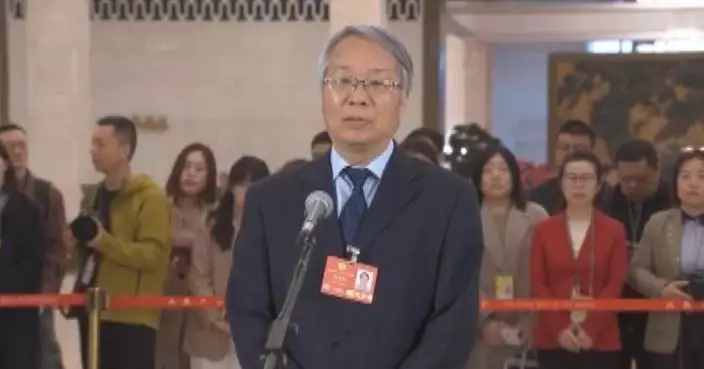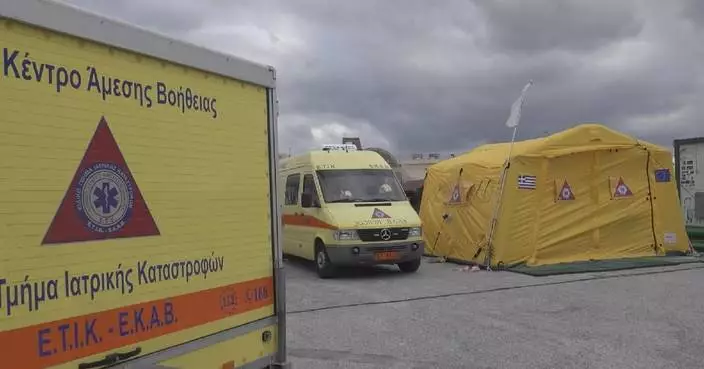China's cold-chain logistics industry reported robust growth in the first half of this year, with electric vehicle sales booming and rail-road combined transport gaining momentum.
At a final assembly workshop for new energy refrigerated trucks in central China's Henan Province, there will be a new vehicle rolling off the production line in every nine minutes or less.
"The market has been thriving since the start of this year, and our workshop has also experienced explosive growth in output, an increase of 316 percent compared with last year," said Yang Xiaoyu, director of the Manufacturing Management Department of Yutong Light Trucks Co., Ltd., a Zhengzhou-headquartered subsidiary of leading Chinese bus maker Yuton Group.
In March, the State Council, or the Cabinet, released an action plan for large-scale equipment renewal and consumer goods trade-ins, ordering measures to promote green upgrading of transportation vehicles such as refrigerated trucks. On July 31, the Ministry of Transport and the Ministry of Finance issued a notice on the renewal of old and used trucks and announced policies to subsidize the renewal program.
The policy support has further stimulated market demand. In the first half of this year, 4,803 new-energy refrigerated trucks were sold nationwide, up over 290 percent year on year.
"We are provided with a subsidy of 35,000 yuan (about 4,915 U.S. dollars) for buying each new energy refrigerated truck, which further reduces our vehicle purchase costs. The company plans to buy nearly 150 more refrigerated trucks in the second half of the year," said Wei Yong, general manager of Henan Shenmu Supply Chain Management Company.
Meanwhile, the railway-highway combined transport business is expanding, facilitating the imports of fresh meat and fruit.
Recently, a refrigerated train carrying imported chicken and beef products arrived at Chengdu International Railway Port in southwest China's Sichuan Province. Now every week there is a cold-chain freight train pulling into the port.
"Since the resumption of the cold chain import business in May last year, the Chengdu International Railway Port has opened cold-chain transport routes to Europe, Laos, Vietnam and other destinations," said Chen Zengyu, business manager at the Operation and Development Department of Chengdu International Railway Port Investment and Development Company.
Apart from European meat products, more and more fresh fruits from Southeast Asian countries are imported into China via sea-rail combined logistics. The Nanchang International Land Port in east China's Jiangxi Province opened its first sea-rail combined transport route in July, improving the transportation efficiency by nearly 30 percent.

China's cold-chain logistics sector posts growth in new-energy vehicles, inter-modal transport

China's cold-chain logistics sector posts growth in new-energy vehicles, inter-modal transport

China's cold-chain logistics sector posts growth in new-energy vehicles, inter-modal transport
DeepSeek's evolution from open-source to resource-driven innovation has spurred widespread adoption of its models, fueling creativity and marking China's significant contribution to the global tech community, said Wang Jian, an academician of the Chinese Academy of Engineering.
China's "AI Plus initiative" has been highlighted in the government work report during this year's "two sessions" for the second consecutive year. As the country continues to promote AI integration across industries, a quiet shift has been unfolding, and its impact is set to revolutionize the global open-source ecosystem.
Through companies like DeepSeek, which opened its large language model to global developers, China is redefining what it means to lead in the AI era by democratizing access to transformative tools.
During a recent interview with China Global Television Network (CGTN), Wang, also a member of 14th National Committee of Chinese People's Political Consultative Conference (CPPCC), emphasized the transformative role of DeepSeek in the global technology landscape.
The AI community is abuzz with excitement over DeepSeek-R1, a new open-source model developed by the Chinese startup DeepSeek.
Released on Jan 20, it has quickly soared to the top of Apple's app store's free charts by Monday, surpassing OpenAI's ChatGPT.
According to DeepSeek, in tasks such as mathematics, coding and natural language reasoning, the performance of this model is comparable to the leading models from heavyweights like OpenAI, but only at a fraction of the cash and computing power of its competitors.
"Just like DeepSeek, they opened their large language model. And so the millions of people around the world could do a lot of innovation things. Probably DeepSeek never could imagine. This is what we see already when they opened the large language model. So, I would say we are under the transformation, from open source code only to really open the resource. So, I call it open resource innovation," said Wang.
Wang acknowledged that the growing use of DeepSeek’s models is a significant step in China's contribution to the global tech community.
"So, I say it's a great achievement and it's a great opportunity. And the challenge is really whether we can keep this moving much fast and forward. So, I would say I can see that actually with DeepSeek, a lot of other technologies from China will be open to the rest of the world. And that's our contribution to the tech community around the world," he said.
Officially known as DeepSeek Artificial Intelligence Fundamental Technology Research Co., Ltd., the firm was founded in July 2023. As an innovative technology startup, DeepSeek is dedicated to developing cutting-edge large language models (LLMs) and related technologies.
Since its first model "DeepSeek LLM" released in January last year, the company has undergone multiple rounds of iteration. In December, the startup launched its open-source LLM "V3", which overtook all of Meta's open-source LLMs and rivaled OpenAI's closed-source GPT4-o, according to U.S. media reports.

DeepSeek leads resource-driven innovation: CPPCC member























































